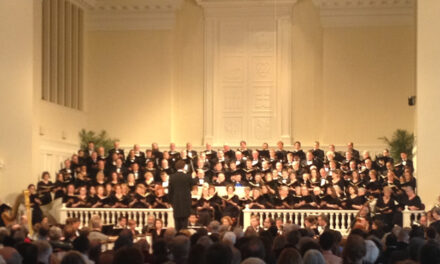Hendersonville Chamber Music concentrates on presenting local musicians of consistently high caliber. The final concert of the 2010 series featured the Opal Quartet playing Franz Josef Haydn’s String Quartet in D (Op. 76 No. 5), Béla Bartók’s String Quartet No. 2 (Op. 17) and Ludwig von Beethoven’s String Quartet in E-flat (Op. 74).
The opening work was the only slightly disappointing work presented. The quartet chose to approach Haydn without much emotion. While technically this was a very good performance, to this hearer it lacked conviction. It was pleasing but a little perfunctory. By contrast, there was nothing at all perfunctory about the Opal Quartet’s performances of the Bartók and the Beethoven works. These towering examples of the quartet literature received the respect and depth of thought that they deserved.
At the beginning of the first movement of the three-movement Bartók work, the way the quartet introduced the motif gave one a sense of inevitability. The quartet shaped the movement around a fast moderato that always respected the moderato spirit. The lengthy second movement with its glissandi and modal moments was filled with folk music from the Carpathian Mountains, a location whose folk culture may be closer to our own Southern Appalachian culture than we normally realize. This movement was such a crowd pleaser that audience emotions boiled over into spontaneous vocalizations. The audience knew there was more to come, but this was their emotional apex. The solemn third movement concluded with the players’ deeply moving pizzicato notes, a respectful silence, and then much applause.
Beethoven’s publisher named his Opus 74 quartet “The Harp.” One of only two “middle period” quartets sandwiched between nine brilliant early quartets and six revolutionary late quartets, it is a work hard to typify. Wisely the Opal Quartet took it at face value, emphasizing the quartet’s classical beauty while respecting moments that presage the late quartets … such as the counterpoint in the third movement.
The Opal Quartet consists of violinists Frances Hsieh and Amy Lovinger, violist Kara Poorbaugh and cellist Franklin Keel. All are principal or assistant principal players in the Asheville Symphony Orchestra, and several of them play in other symphony orchestras, including those of Charleston, Greenville, Spartanburg and Hendersonville. All four hold undergraduate or graduate degrees from the Eastman School of Music, where some studied with the Ying Quartet. All but Ms. Hsieh have been with the quartet since its founding in 2006.
During their four years in existence, I have heard the Opal Quartet many times: Philip Glass’s String Quartet No. 5, the Turtle Island Quartet’s “Waterfall with Blenders” and Dmitri Shostakovich’s String Quartet No 5 in addition to pieces from the classical and romantic repertory. This is an ensemble that is creditable when playing the old favorites, but outstanding when they tackle 20th and 21st century music. They display far more intelligence and depth of emotion in this repertoire than most touring quartets. Memorable moments in my past have been the Glass and Shostakovich performances by the Opal Quartet. To these, I will now gladly add the Opal Quartet’s performance of the Bartók on Sunday.











